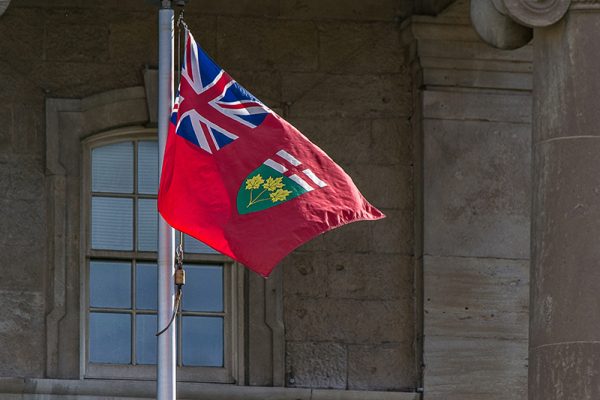
Editorial: Ontario ignites forest bioeconomy with millions in biomass program funding
April 1, 2024
By Maria Church
Province’s forest biomass program starts paying out
 The Ontario flag flying outside Queen's Park in Toronto. Photo: Adobe Stock
The Ontario flag flying outside Queen's Park in Toronto. Photo: Adobe Stock I’m not one for New Year’s resolutions, but even I’ll admit the new year brings feelings of new beginnings; fresh starts.
And I imagine for some Ontario biomass project developers that feeling has been brewing for the past few months as Ontario announced long-awaited funding recipients of its first-of-kind forest biomass program.
The province launched the $19.6-million program in May last year, and in December doled out the first $1.5 million to 15 projects. In late January, they announced another $9.4 million to be shared among 14 recipients.
Ontario is at long last ponying up to support its forest bioeconomy.
I spoke with Ontario Forest Industries Association’s executive director Ian Dunn last summer, not long after the forest biomass program was announced, and we touched on the program’s potential for industry.
While any increase in the use of Ontario’s forest biomass is good news, Dunn said electricity and energy consumption or production is currently the most deployable and scalable technology that exists.
The federal government agrees, as we saw late last year with the move to include biomass for heat and electricity generation in the Clean Manufacturing and Clean Electricity Investment tax credits.
Five facilities in Ontario use forest biomass to generate electricity and sell it to the grid, together totalling around 270 MW. Many other forestry companies produce energy for their own consumption.
“There’s all kinds of opportunities and emerging products for forest biomass,” Dunn said. “We’re also seeing the potential for pairing that technology with carbon capture and storage to generate negative carbon emissions. I think that’s really exciting.”
Many of those emerging technologies will get a boost thanks to the forest biomass program. Renfrew County sawmillers Ben Hokum and Son, for example, received nearly $120,000 for a project to use underutilized and unmarketable timber and forest biomass to produce advanced bioproducts such as pyrolysis oil, insulation, and bio-plastics.
Some funded projects are purely practical, and that’s good to see, too. True North Trucking out of Thunder Bay is receiving $250,000 for a new truck and self-unloading trailer to deliver forest biomass from suppliers to customers in Northwestern Ontario.
On a personal note, it’s wonderful to see Whitesand First Nation, Bingwi Neyaashi Anishinaabek First Nation, and Lake Nipigon Forest Management Inc. among the latest round of funded projects – all three I’ve written about over the past few years.
As many readers are aware, Whitesand’s project has been in the works longer than this magazine has been printing. Their team is receiving a healthy $1,289,573 from the forest biomass program to prep the site of their wood pellet plant.
As long-time Whitesand project champion David Mackett said on the Scaling Up stage in Ottawa last November, “Why should a First Nation not have access to develop and create power from their own forests? Biomass carbon reduction in Indigenous communities can lead to poverty reduction.” •
Print this page